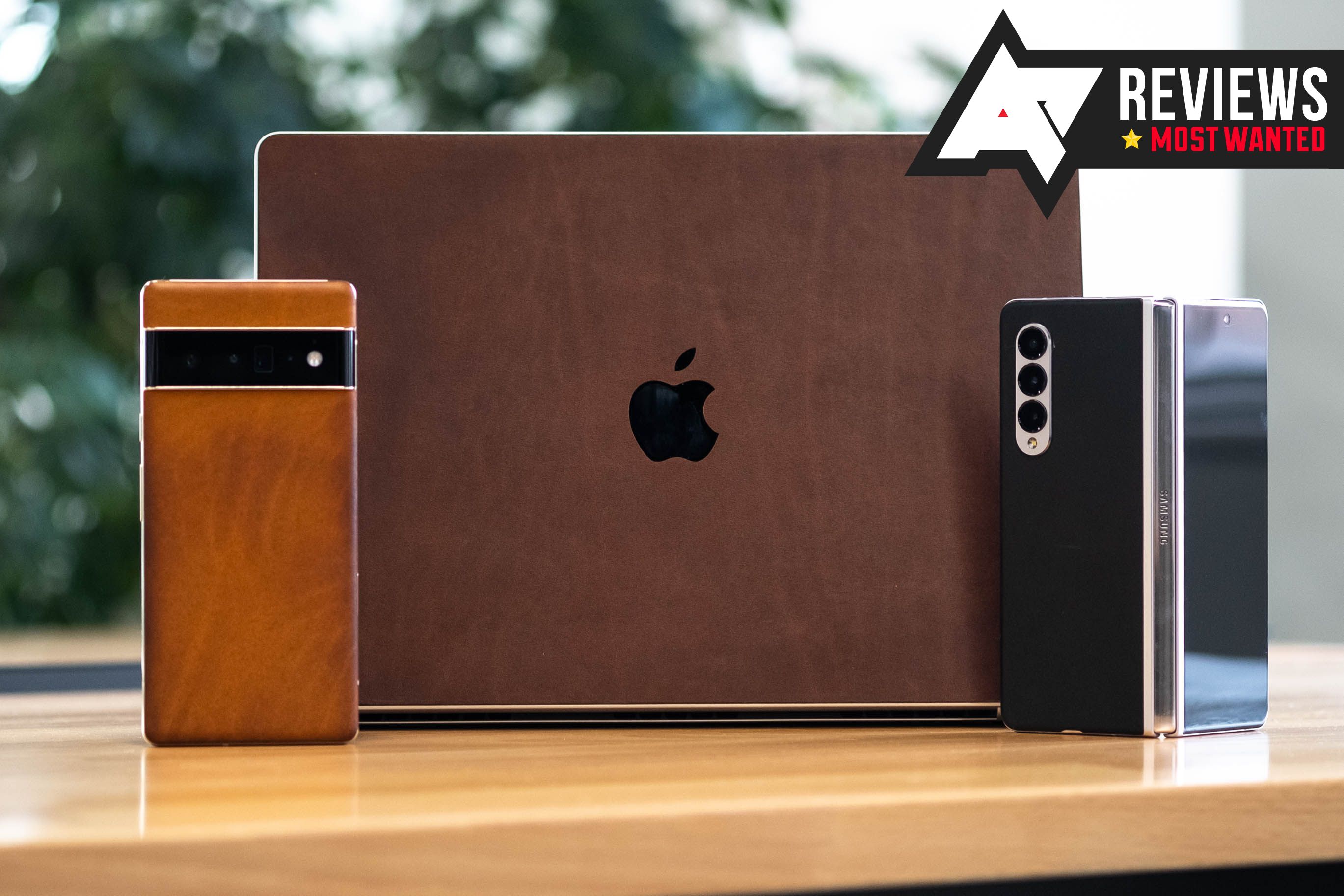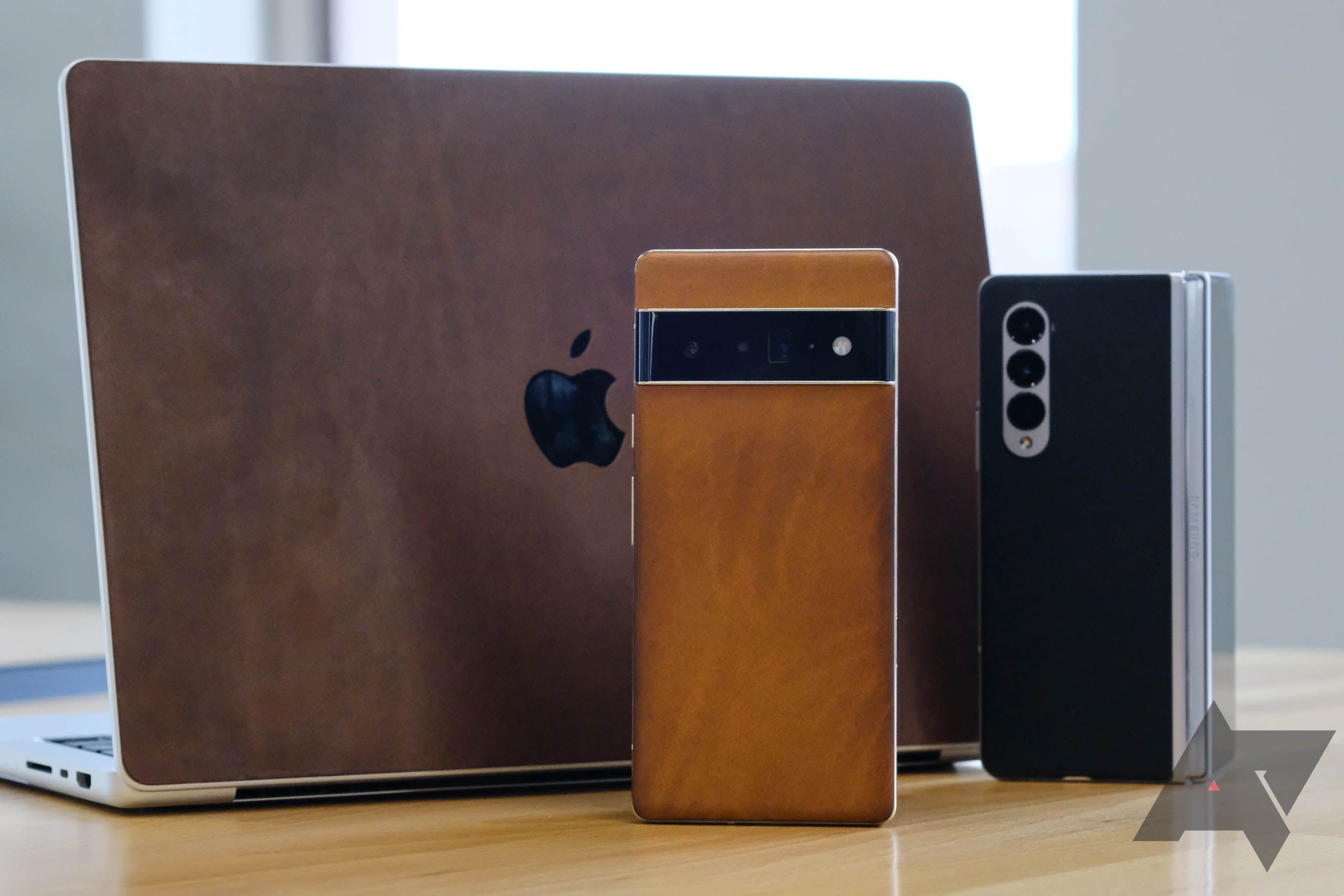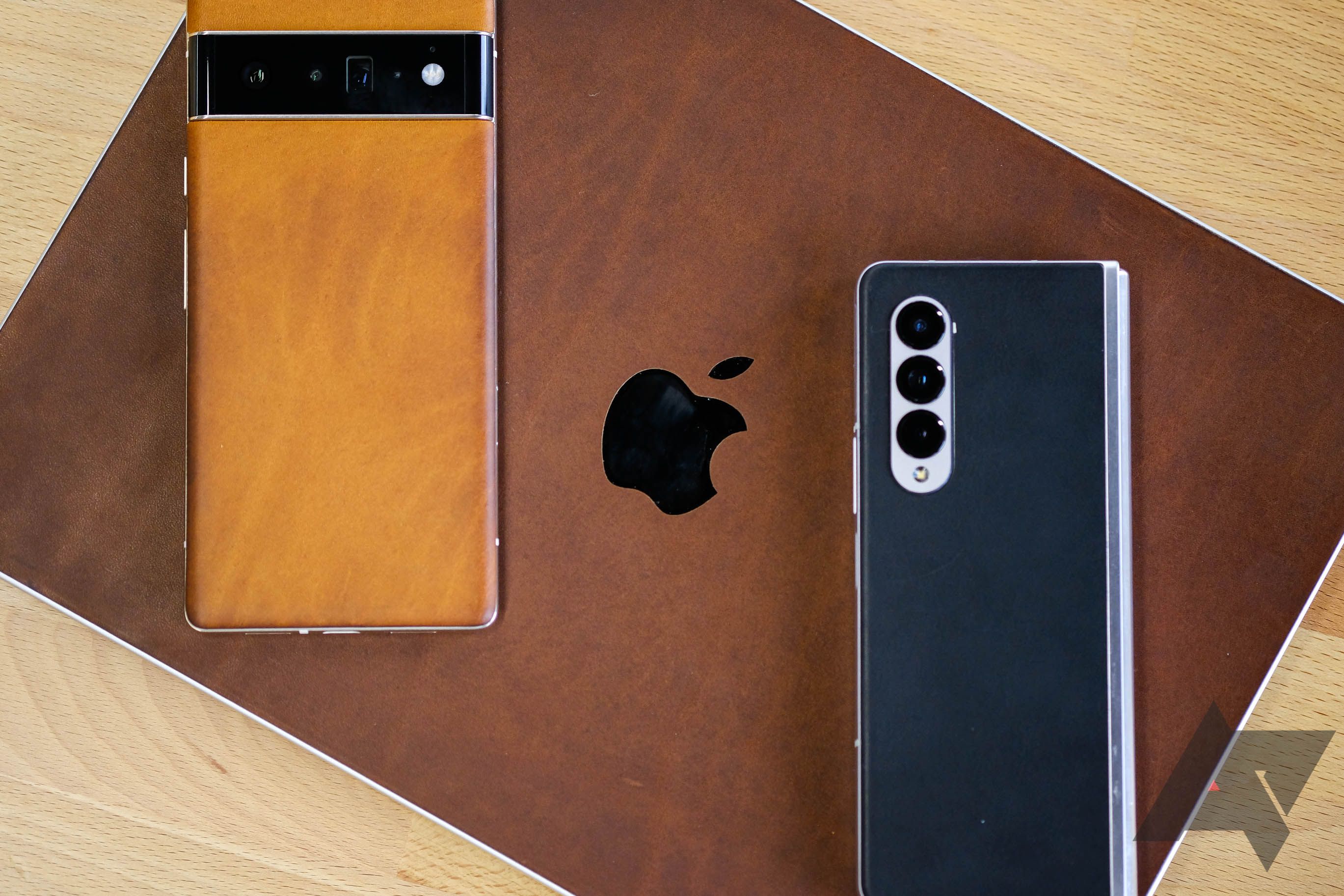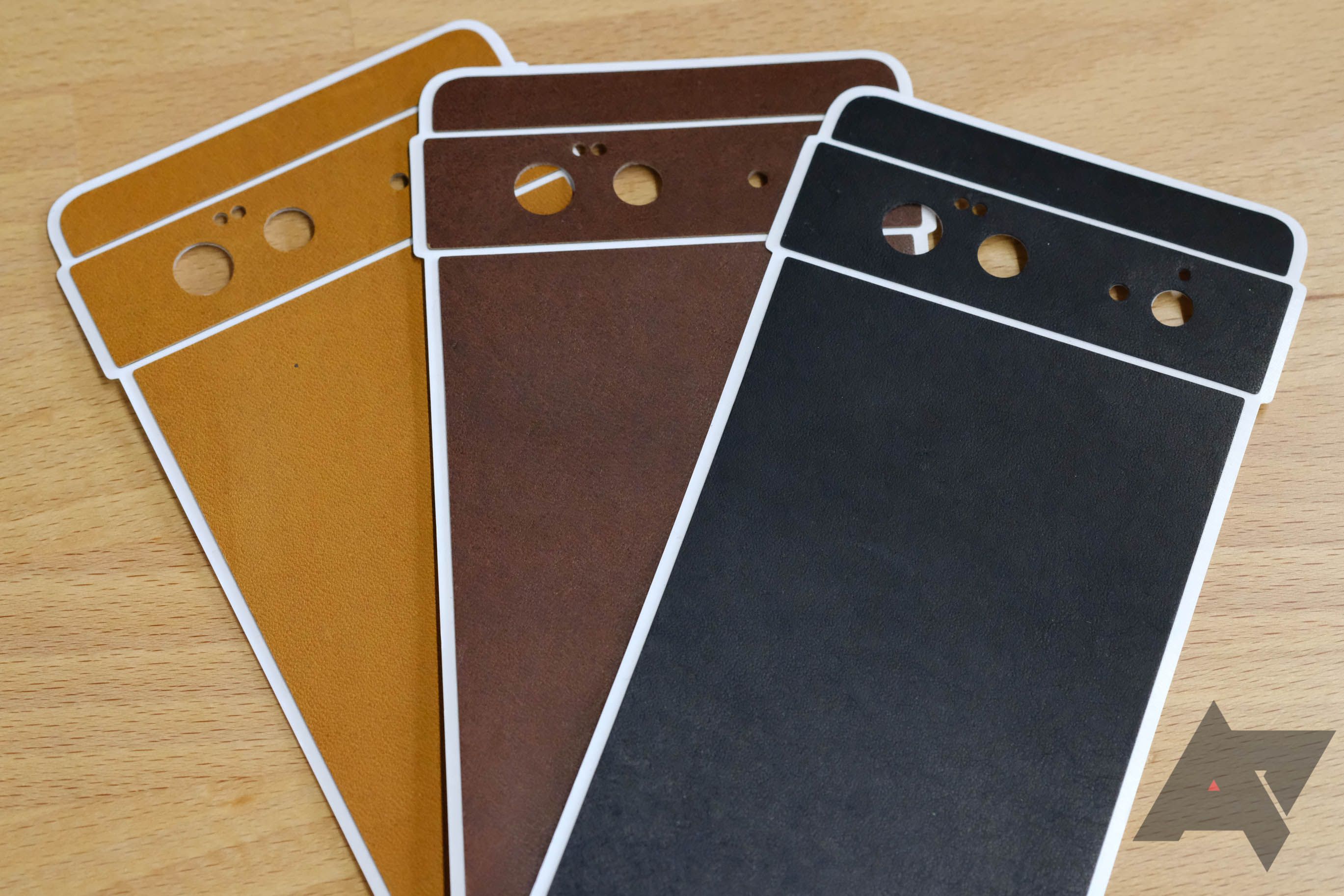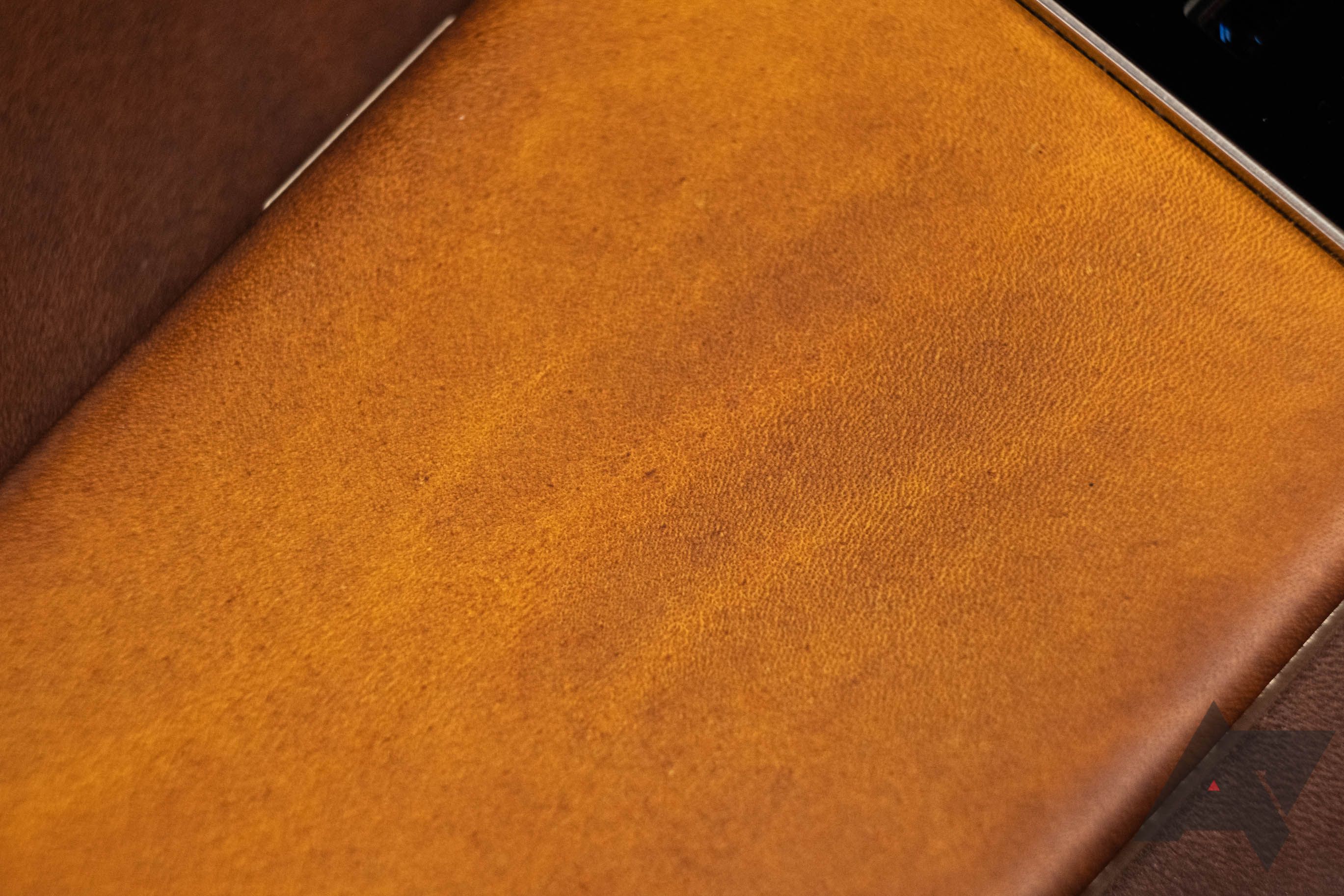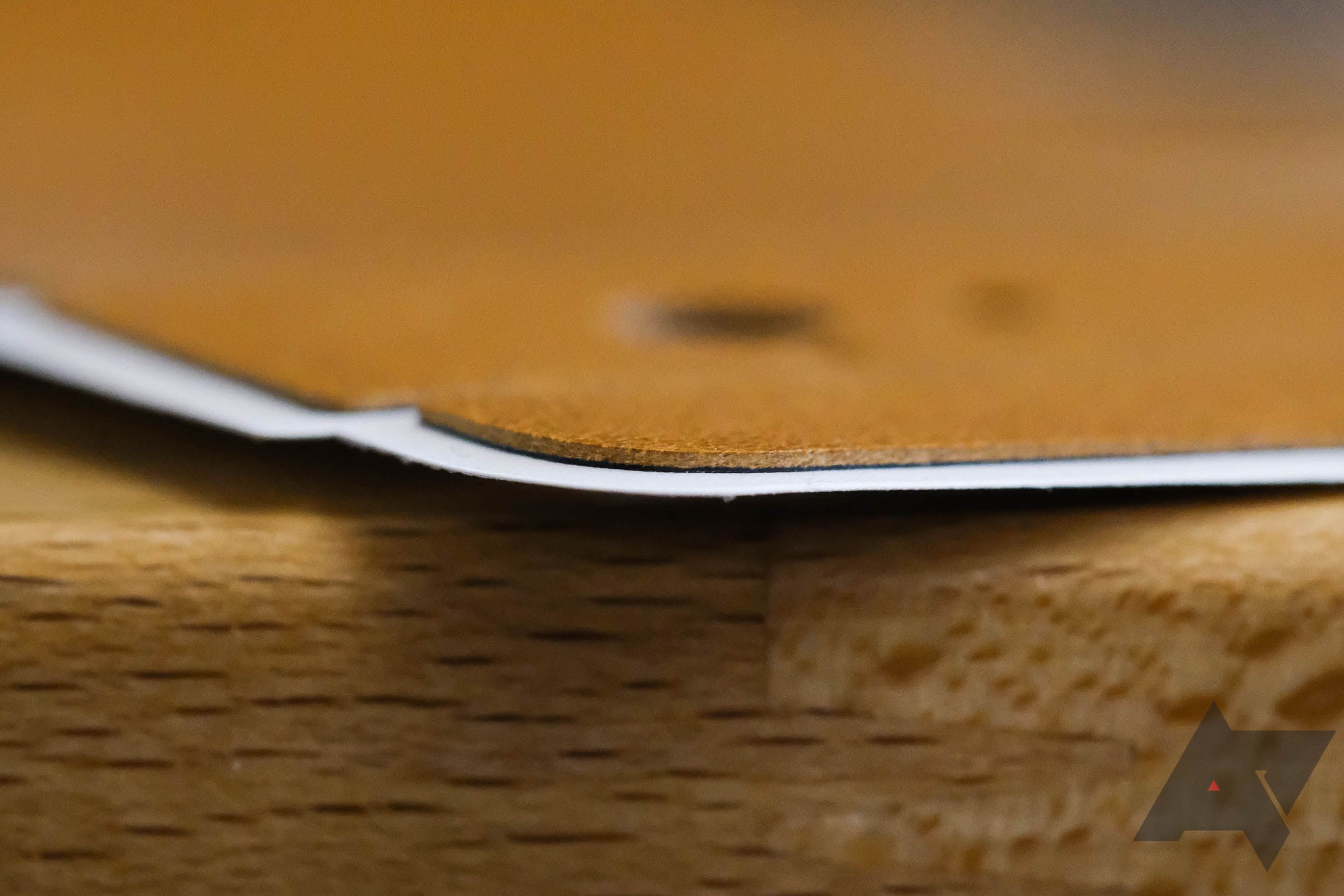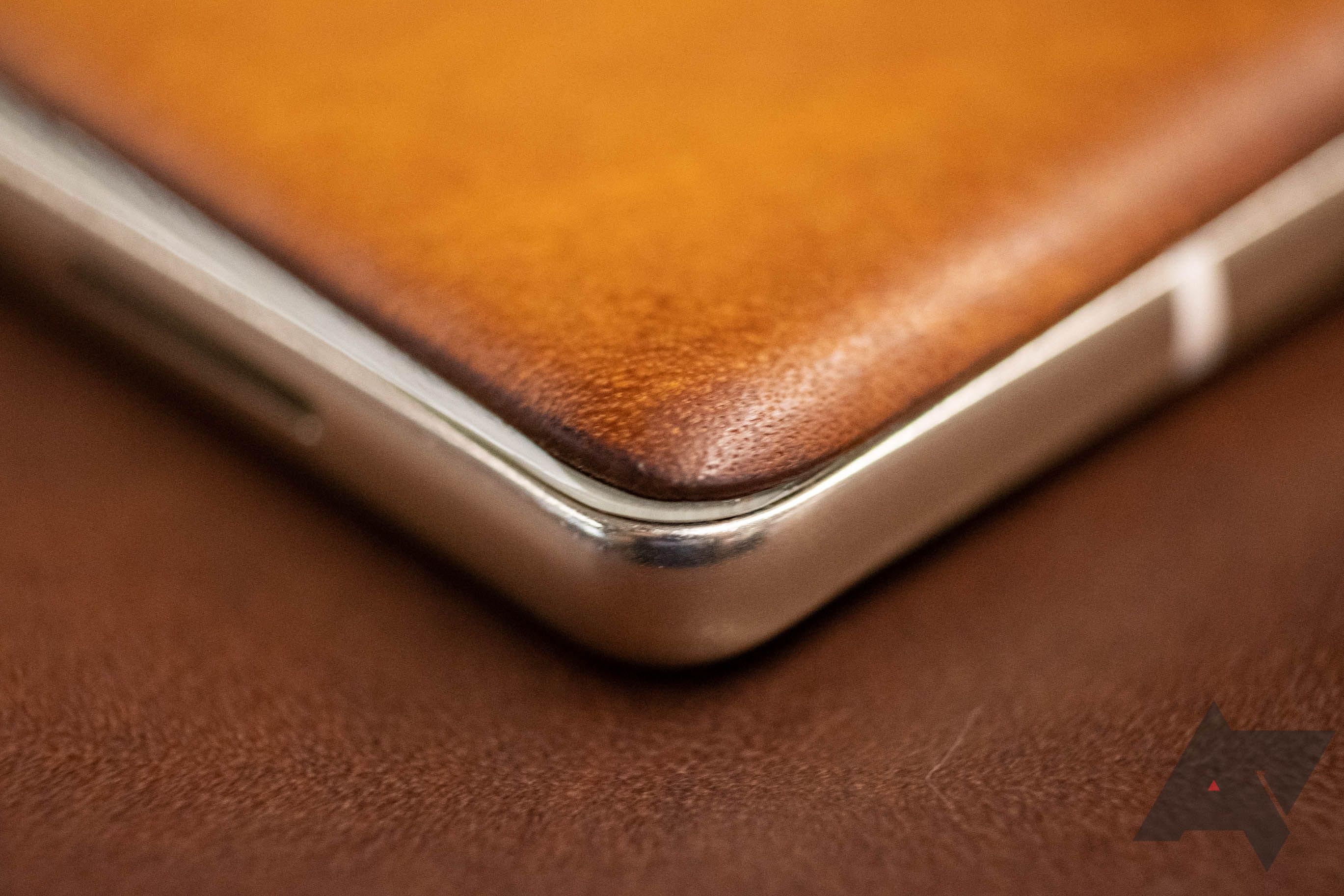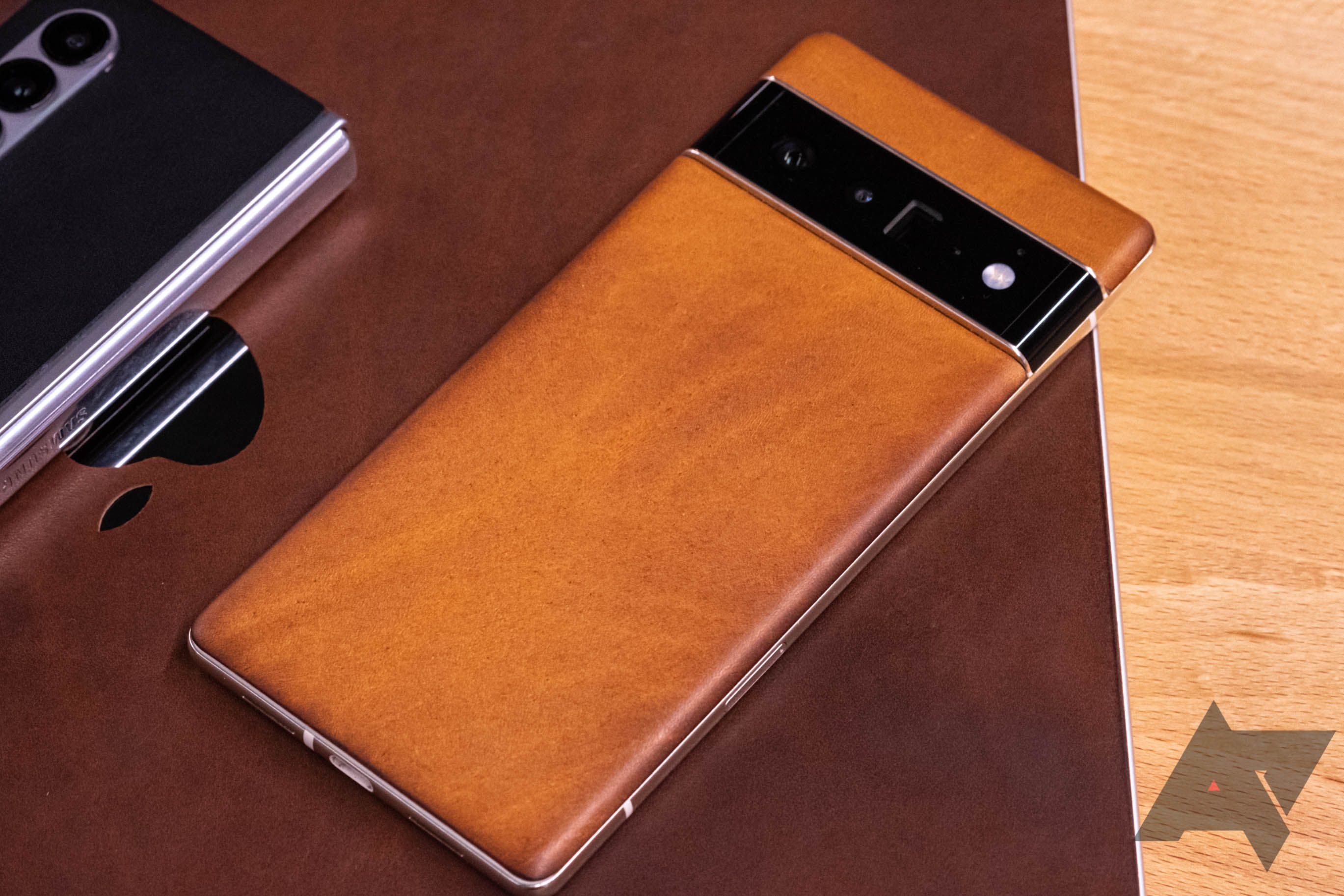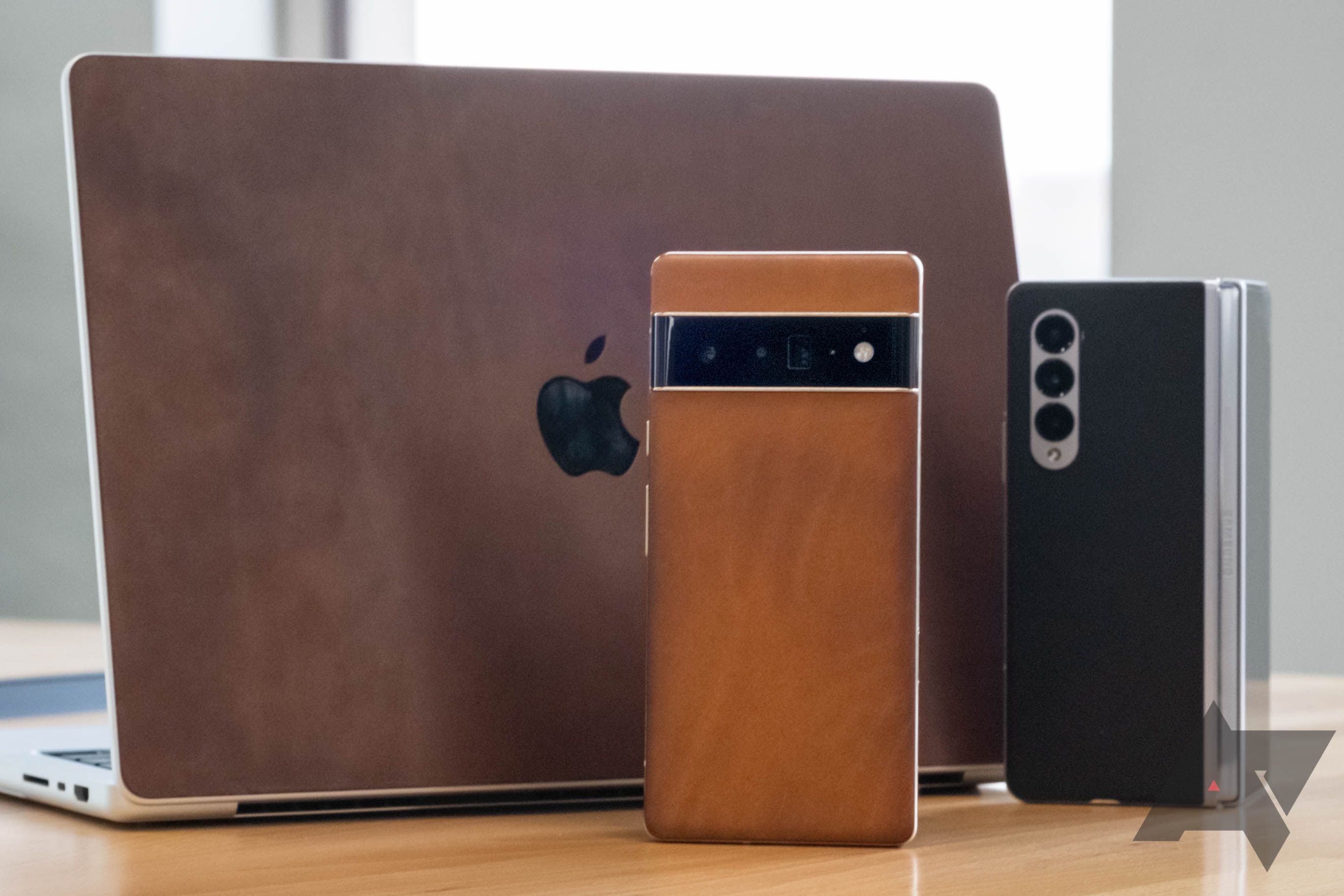I’ve never been a “smartphone skin” person — they just aren’t my style. Why would I want to cover my super-premium, beautifully engineered aluminum and glass objet d'art with a cheap sheet of vinyl, like grandma does for her aging sofa set? Honestly, I even found the idea a little gross. But as someone who loves premium materials, dbrand’s new leather skins have made me a convert. They are really, really nice.
dbrand Leather Skins
The new leather skins by dbrand use great quality materials to deliver a super-premium experience, and they're easy to recommend.
- Material: Leather
- Price: Varies
- Thickness: 0.5mm
- Premium materials
- Great fit
- Requires care
- Limited colors
“Skins” like this aren’t a new concept at all. Several companies make them, some better than others. But until recently, most of them have been vinyl with a printed (and sometimes textured) pattern. You can even see printing artifacts — blurry half-tone dots that constitute the bigger picture, visible with a sharp eye at just under an arm’s distance. Backed by adhesive, they stick to a phone’s back, sides, or camera module, giving it a new look in that same familiar shape. Companies even make them for other products, and they’re a popular way to safely and easily customize your gadgets. And, if you can’t tell, I was never really into the execution, even if the idea itself appealed to me.
Vinyl is gross — leather isn’t
Vinyl isn’t a premium material for me, no matter what sort of colors you stick on top of it. It’s the flexible alternative companies choose when things like leather are just too expensive, or when something needs to be beefy but disposable. It’s basically bendy plastic. With smartphones already made of aluminum, glass, and sometimes even materials like stainless steel, ceramic, titanium, and sapphire, why on earth would I want to cover that up with cheap plastic? One might argue it’s protective, but that’s what cases are for, they do a better job at that, and they’re available in nicer materials too.
Skins just didn’t fit my style. That is, until now. After swaddling probably half of my current electronics in dbrand’s new leather skins, I’m a convert, and I wish I could put them on most of the things I own.
Part of that affinity is just because I’ve always loved good leather as a material. While there are some cheap and awful examples of low-quality leather out there, like Apple’s most recent leather iPhone cases, dbrand did not mess around here. The company was able to skive (fancy leatherworking term for “shave down”) vegetable-tanned leather (read: good stuff) so thin that, together with its adhesive backing, the full package comes in at just 0.5mm thick. While that’s thicker than dbrand’s normal vinyl skins, that’s very, very thin for leather goods.
Getting technical about leather
Usually, leatherworkers measure thickness in a term called “ounces,” with each corresponding to 1/64th of an inch. One ounce is very thin, and based on what I can tell looking at the skins themselves, dbrand managed to get it even thinner — sub ounce. As an amateur leatherworker myself, I can tell you that is very hard to do in a way that is both even and unlikely to stretch or deform. But, somehow, they did it.
Getting back out of the weeds for a moment, dbrand’s leather is simply excellent. It’s full-grain vegetable tanned leather, which is something that needs to be unpacked for you to understand the benefits here.
Leather comes in many kinds of tannages, cuts and types that affect the quality and use cases. The most “premium” cut of leather in most instances is what is called “full-grain,” and that means that the surface of the leather, the part you’re touching, is original. It hasn’t been grain-corrected in a way that removes blemishes, which is often done for lower-quality skins. Think about it: this natural product was once part of an actual cow walking around in a field somewhere, subject to things like fences and insects. Like you, these cows have probably picked up a few injuries over their lives, and those scars hang around forever.
Some companies will give these lower-quality hides a more uniform appearance by buffing out the imperfections and topping them with a false texture or coating, among other indignities. Admittedly, this is a fantastic way to reduce waste by turning a lower-quality material into something with more possible applications, but it results in an objectively inferior product. And dbrand’s leather is the high-quality already-blemish-free type, preserving the original surface and grain.
The type of tannage is less of an up-front good vs. bad thing — different use cases demand different materials. But vegetable tanned leather has some attributes that customers like me enjoy. Veg tan is physically stronger and less likely to stretch or break than chrome tan for the same weight, though it is less soft.
However, there is one major reason that pretentious folk like me like it: It patinas. Over time it picks up oils, oxidizes, and darkens with use. However, here are a handful of “drawbacks” to vegetable tanned leather. Unless it’s topped by a sealant or waxed, it isn’t water-resistant, it can get stained, and it can dry out. But, if you keep it moisturized, it might last longer than you do.
This does mean that dbrand’s new skins have the same drawbacks, and you actually have to be a little careful. I wouldn’t submerge your phone in water, and be careful with hand sanitizer: Alcohol dries veg tan leather out, same as your hands. Once or twice a year, I’d also hit it with a leather conditioner or oil like Leather Honey. And be careful not to ding it up too bad. Any deep scratches won’t repair themselves, though mild wear does make for an even more attractive patina (in my opinion).
If you are the set-it-and-forget-it type, dbrand’s leather skins might not be for you. Leather is a responsibility — you have to take care of it. But it’s work that reaps premium benefits.
Dbrand won’t tell me what tannery its leather comes from (I am a huge leather nerd if you can’t tell), but the leather quality here is outstanding and covers a lovely range. None of the skins I’ve received had any visible scars. Some of the skins had visible wavy grain — I love that, though others may not — while others had a very uniform and even grain. You probably can’t choose what you get, and this is a natural material; there will be variation. But every one of the probably two dozen examples I’ve so far is excellent.
Put it on your phone the right way though
The only impediment you are likely to run into is the application process itself, and it’s not hard, you just have to make sure you do it all correctly. This is a flat product being applied to a not-flat surface, so stick to the script and use a blow dryer. The heat allows the leather and its adhesive to bend and form onto those compound curves more reliably and stick to them better.
I know this because I didn’t use a blow dryer on my first application, thinking (wrongly) that I would be fine, but the edges of my skin peeled pretty easily, like when I slid my phone into my pocket. When I asked if this was a known issue, Dbrand tactfully pointed out that I was very dumb, instructions exist for a reason, and all my subsequent (correct) applications have been fine and haven’t peeled up even under relatively heavy wear.
You also have to remember to burnish the edges. The way the skins are cut leaves a sharp edge to the leather that’s not particularly comfortable, especially since these are a little thicker than the vinyl skins. But apply a little friction with the included cloth (perhaps just slightly dampened with water), and you can smooth it right down.
It won’t be a perfectly flush transition, but that will round the edge over nicely. Burnishing may also darken the edge noticeably if you are using the lighter-colored tan skin — just think of it as the start of your eventual patina.
I haven’t had the skins on any of my devices long enough to develop a strong patina, but even over the last week, my Pixel 6 Pro’s skin has started to darken in a few spots, like along the edges and where my fingers rest against the back. Already this slight change in color highlights the strong, wavy grain of the skin I chose. While I do wish that the skin extended perhaps half a millimeter further up or down to entirely hide every bit of the glass back, it’s very handsome. My Pixel 6 Pro looks like a million dollars, and the tan skin goes very, very well with the “Sorta Sunny” gold.
I’ve also put a skin on my Z Fold 3, and while it only covers the glass back, the leather actually makes the phone a little bit grippier and easier to hold one-handed. It makes the nearly two thousand dollar phone look that much more premium. And, of course, it’s just nice to feel, with a fine, warm, smooth texture. That gripyness is less useful on my MacBook Pro, but I’ve enjoyed the skin there as well — it’s still pretty.
Should you buy it?
I tend to use phones without protective gear like cases or screen protectors, partly because I need to be able to take photos at the drop of a hat for a story without them looking weird, and partly because I change phones so often for coverage that it’s simply impractical. But dbrand’s new leather skins are so nice, you’re all probably just going to have to deal with my leather-backed Pixel 6 Pro in photos here going forward. Sorry, but that’s how much I like these skins.
I wish Nomad’s leather skins were available for non-iPhones as another choice for our readers, but dbrand’s skins are so nice, we’re not missing much. For $35, I think dbrand’s skins are easy to recommend to anyone that wants a more premium customized experience on their smartphone. And even I, a vocal skin critic, absolutely love them. In fact, I like them enough to give them our Most Wanted award.
If you’re considering buying a skin for a phone in the next couple of weeks, this is the first one you should be looking at — unless you’re opposed to leather, which is a perfectly valid viewpoint to have.
The skins are available for the usual lineup of gadgets, including most flagship phones from the last 2-3 years, the Nintendo Switch, Apple and Microsoft tablets and laptops, and even the PS5. I’m not sure it makes a ton of sense to buy these skins for a bigger device like a laptop where you won’t be able to feel it as much — the joys of good leather are mostly transmitted by touch — but inset on the back of one of dbrand’s cases or as a skin on the back of a phone, these special edition leather skins are very, very nice. I’m not sure if dbrand is planning to bring them back after this limited drop, but right now they're scheduled to go pumpkin on Christmas. I’d encourage anyone that likes good leather to buy one at dbrand's store asap.
Buy it if:
- You want a premium skin for your phone
- You like natural materials and can accept some variety in finish or texture.
- You can accept the responsibility of leather — it requires maintenance and work.
Don’t buy it if:
- $35 is too steep for you
- You don’t want to deal with the maintenance.

